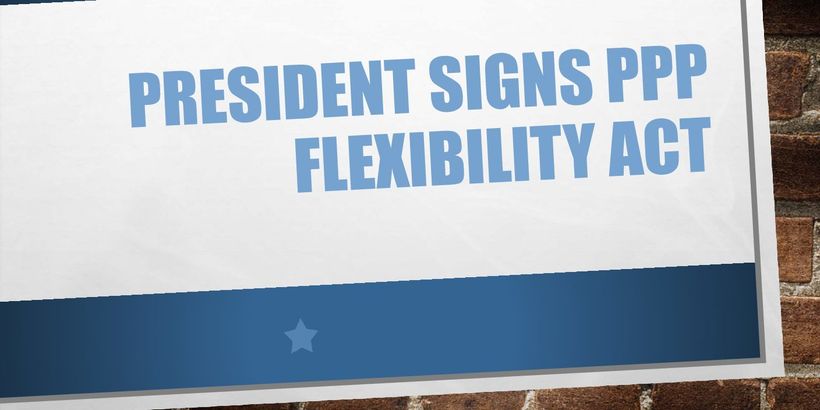Paycheck Protection Program Flexibility Act

June 8, 2020
By Jason A. Rothenburger
With overwhelming bipartisan support, Congress got it right. With so many small businesses that received funds from the Paycheck Protection Program (PPP) struggling to use those funds within the original allotted eight-week time frame, Congress has made the right decision to make some key changes to the PPP, by passing the Paycheck Protection Program Flexibility Act (PPPFA). Business owners can breathe a huge sigh of relief now that those changes have been signed into law.
The original PPP was flawed in a couple of key ways. At around the same time the PPP was rolled out, those seeking unemployment benefits could earn an additional $600 a week in federal unemployment benefit on top of the regular unemployment benefits. This additional benefit allowed some workers to earn more in unemployment benefits then they would be going back to work. Business owners have been struggling to rehire their employees because of this.
The other key flaw in the original PPP was the eight-week covered period to use the funds. Under the original PPP, the eight-week covered period began the day after the PPP funds were received. With the fire drill that was the first round of funding and the threat that the money was going to run out within days or perhaps hours, many business owners were forced to apply for funds, knowing they would not be able to reopen their businesses right away. With the COVID shutdowns continuing longer than they were originally expected to last, many businesses were coming up on the end of the eight-week covered period without having been able to open back up. While the intent of the PPP was to have business owners pay their employees even if they did not open back up, many business owners did not do so. It simply did not make sense for them to pay their employees while shutdown.
Here are the key elements of the Paycheck Protection Program Flexibility Act (PPPFA):
- Covered period extended to 24 weeks from eight weeks. Business owners who received PPP funds now have 24 weeks from the funding date of the loan (or December 31, 2020 which ever is earlier) to use those funds.
- Repayment period extended from two years to five years. The applicable interest rate remains unchanged at 1%.
- The payroll costs percentage has been lowered from 75% to 60%. The original guidance released by SBA required that business owners spend 75% of the amount of their PPP funds on payroll costs. PPPFA reduced that requirement to 60%. Business owners can now use up to 40% of their funding for non-payroll costs (rent, mortgage payments, utilities).
These changes are critical in the uncertain times we all face and are expected to all but guarantee millions of business owners to qualify for full forgiveness. While there are still aspects of the PPP that need further clarification, the PPPFA addresses some of the key unknowns that were a source of a great deal of stress and anxiety for many small business owners.










